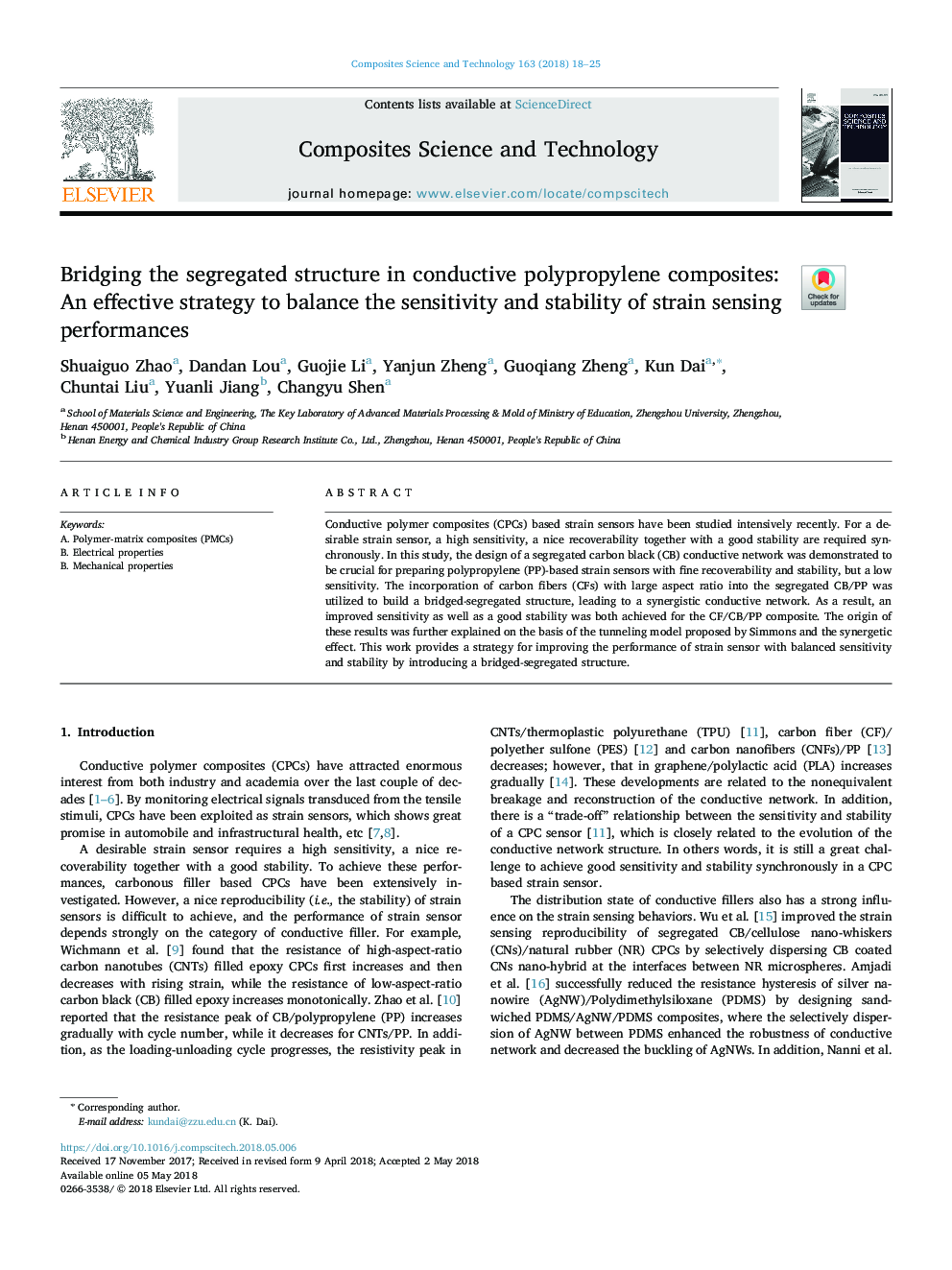| Article ID | Journal | Published Year | Pages | File Type |
|---|---|---|---|---|
| 7214304 | Composites Science and Technology | 2018 | 8 Pages |
Abstract
Conductive polymer composites (CPCs) based strain sensors have been studied intensively recently. For a desirable strain sensor, a high sensitivity, a nice recoverability together with a good stability are required synchronously. In this study, the design of a segregated carbon black (CB) conductive network was demonstrated to be crucial for preparing polypropylene (PP)-based strain sensors with fine recoverability and stability, but a low sensitivity. The incorporation of carbon fibers (CFs) with large aspect ratio into the segregated CB/PP was utilized to build a bridged-segregated structure, leading to a synergistic conductive network. As a result, an improved sensitivity as well as a good stability was both achieved for the CF/CB/PP composite. The origin of these results was further explained on the basis of the tunneling model proposed by Simmons and the synergetic effect. This work provides a strategy for improving the performance of strain sensor with balanced sensitivity and stability by introducing a bridged-segregated structure.
Related Topics
Physical Sciences and Engineering
Engineering
Engineering (General)
Authors
Shuaiguo Zhao, Dandan Lou, Guojie Li, Yanjun Zheng, Guoqiang Zheng, Kun Dai, Chuntai Liu, Yuanli Jiang, Changyu Shen,
